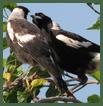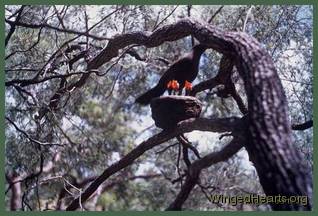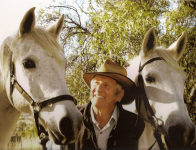Unlocking the Healing Power of Flowers for our Feathered Friends
By Christine Agro
Birds love flowers. Traditionally, not for their beautiful blooms but for the nutritious seeds that follow. Many people use flowers to attract birds, be it finches, sparrows or cardinals.
But did you know that flowers provide a natural healing key for birds? Each flower has an energetic personality and that personality can be transferred to water, simply by soaking the flower in water. The result is Flower Essences. Flower Essences are part of what is known as vibrational medicine. Distinctly different from conventional medicine which strives to suppress symptoms, vibrational medicine works with the energy state of the body (which includes our physical body, emotional body, energy body, mental body, spiritual body and our aqueous body.) It is a subtle, non-invasive approach to health and wellness and it supports the natural healing ability of the body. Animals especially benefit from the use of Flower Essences because they have not lost that connection to their innate healing ability.
All animals in the wild are capable of self-healing. If you watch animals in their natural environment you will find them sampling different herbs, nibbling on flowers, eating grass all of which addresses their fine attunement to the needs of their own body. Nature provides all that our bodies need to live and thrive, but unlike animals in the wild, most of us have lost the inner voice that guides us to what we need.
When it comes to using Flower Essences with birds, it is an interesting shift in our relationship. We are indeed expanding our consciousness and our ability to live and communicate with the animals of the planet and because of our dexterity and stature there are many things we can help animals with.
There seems to be the occasional bird who recognizes that leaving a flower blossom in a small pool of water provides a healing experience, but by far, this is new information for our bird friends. If you want to offer the healing power of Flower Essences it is important to also offer clean pure water along side and let them decide which they want. It is true that Flower Essences will illicit no response if they are not needed, but where birds are concerned it is important to give them the conscious choice.
You can certainly work with pre-made flower essences from Bach, Flower Essence Society, Perelandra or any of the other Flower Essence providers, but another more harmonic option is to use whole flowers and especially flowers that are native to your area. Birds want to learn about the healing power of flowers so by using the whole flower you can teach them how to make their own flower essences. Be sure to let them know what you are going to be doing and let them know why before you get started.
If you want to introduce Flower Essences to your bird friends pick a few that support the emotional body, the removal of toxins and the strengthening of the auric field. Start a journal so you can document what happens. Create two birdbaths, or water sources; one that will be pure water and one that will hold the flower essence. The water source will need to be in the sunlight for this to work. Fill the water source with pure clean water and in the morning drop in the flower tops of the first flower you’ve chosen to work with.
Let the flower tops soak in direct sunlight for several hours – you may notice birds starting to come by to check things out even with the flowers still soaking and that’s o.k. When you are ready to take the flower tops out, leave one or two so that the birds can make a connection between the flower tops and their healing experience. This way they will begin to create their own catalogue of which flowers to use and when. After you get started you may even find that your bird friends will begin to bring you flowers that they want to try.
Notice how many birds come, what kinds of birds, and what is their reaction. Use the same Flower Essence for several days before switching to a new one and continue your research and teaching. Always create a new batch of Flower Essences each day though. Start with fresh water and place the flower tops in to soak. When you switch Flowers be sure to let your friends know too.
This method satisfies our bird friends' desire to learn about the healing power of flowers. But you can still use bottled Flower Essences when you are aware of disturbances or your bird friends tell you they or one of their family is in need of support. In this regard you can drop 1 or 2 drops in a fresh water source. They can also be administered orally – just one drop on your finger rubbed on the beak will do.
Whether you are teaching and doing research or providing support here are several suggestions of Flower Essences you can work with:
Rock Rose: provides courage and strength
Mimulus: addresses fears – fear of change, fear of death, fear of new people or animals
Cosmos: opens interspecies communication
Pink Yarrow: helps to build a healthy auric field
Chamomile: soothes, calms and nurtures
Star of Bethlehem: supports when there is tragic death
Bleeding Heart: helps to deal with the death of a loved one
Red Clover: provides strength during mass hysteria (good for natural or manmade disasters)
Mountain Penny Royal: revitalizes the auric field
Lavender: reduces nervousness, support highly refined awareness
Crab Apple: supports the cleansing of emotional and environmental toxins
Vervain: calming – good for injured birds.
For more information on the properties of flowers, The Flower Essences Society based in California has an excellent Flower Essences Repertory, which is available both in book form and as an on-line resource for Society members. You can find them at <;a target="_blank" href="//www.wingedhearts.org/%3Ca%20href%3D"http://www.flowersociety.org/">www.flowersociety.org">http://www.flowersociety.org/">www.flowersociety.org.
Flower Essences hold a wonderful opportunity for us to connect more deeply with our bird friends and join together in an exploration of teaching and learning. Listen to what they tell you and seek the flowers that will best support their needs and desires. Everyone who participates in this exploration will expand and evolve in magical ways.
|
















 del.icio.us
del.icio.us Digg
Digg Facebook
Facebook Google
Google Google+
Google+ LinkedIn
LinkedIn MySpace
MySpace Ping This!
Ping This! SlashDot
SlashDot StumbleUpon
StumbleUpon Twitter
Twitter Yahoo
Yahoo



